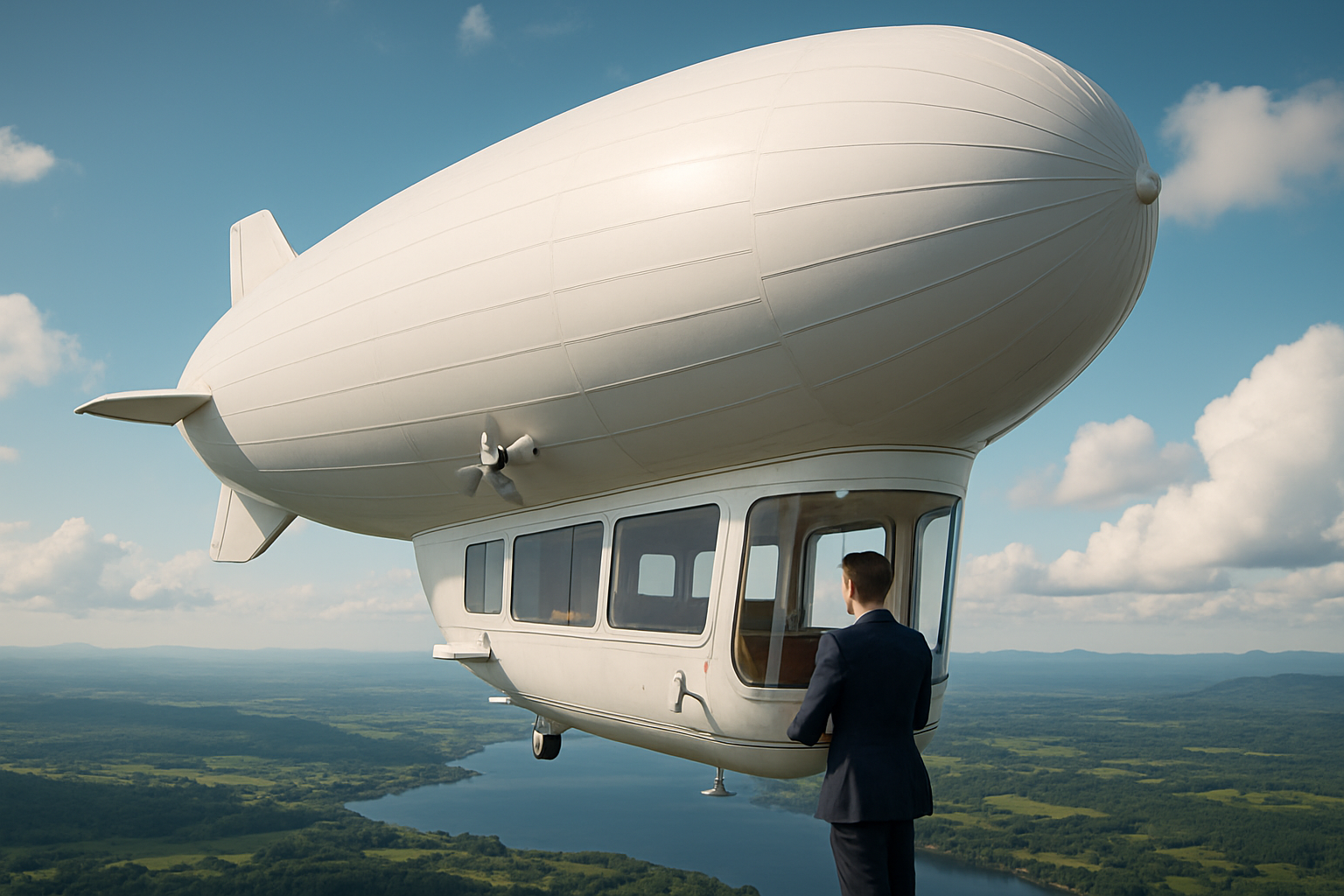Skybound Adventures: The Rise of Airship Tourism
Floating gracefully through the clouds, airships are making an unexpected comeback in the world of travel. This resurgence of lighter-than-air vessels offers a unique blend of nostalgia and innovation, promising travelers a new perspective on slow, luxurious journeys. As the travel industry seeks sustainable alternatives and distinctive experiences, airships are emerging as an intriguing option for those seeking to voyage in style while minimizing their carbon footprint.

Despite their initial popularity, airships faced significant setbacks. The Hindenburg disaster in 1937 marked a turning point, leading to a rapid decline in public confidence and commercial viability. For decades, airships were relegated to niche uses such as advertising blimps and military surveillance.
The Modern Airship Renaissance
Today, advances in materials science, propulsion systems, and safety measures are breathing new life into airship technology. Companies like Hybrid Air Vehicles in the UK and Airship Industries in the US are developing next-generation airships that promise to revolutionize both cargo transport and tourism.
These modern airships bear little resemblance to their predecessors. Utilizing cutting-edge composites, advanced avionics, and hybrid-electric propulsion systems, they offer unprecedented levels of safety, efficiency, and maneuverability. Many designs incorporate features like vectored thrust and dynamic buoyancy control, allowing for precise navigation and the ability to land without extensive ground infrastructure.
The Appeal of Airship Tourism
Airship tourism taps into several current travel trends. First and foremost is the growing demand for sustainable travel options. Airships consume significantly less fuel than traditional aircraft, potentially reducing carbon emissions by up to 90% on certain routes. This eco-friendly aspect appeals to environmentally conscious travelers looking to reduce their carbon footprint without sacrificing the thrill of air travel.
Secondly, airships offer a unique travel experience that combines the romance of bygone eras with modern comfort. Unlike cramped airplane cabins, airships can provide spacious interiors with panoramic windows, allowing passengers to enjoy unobstructed views of landscapes below. The slower pace of airship travel also aligns with the growing slow travel movement, encouraging passengers to savor the journey itself rather than rushing to a destination.
Innovative Airship Experiences
As the technology matures, companies are developing creative ways to leverage airships for tourism. Some proposed concepts include:
-
Aerial Cruises: Multi-day journeys over scenic routes, mimicking ocean cruises but with ever-changing aerial views.
-
Sky Lounges: Stationary airships tethered above cities or natural wonders, serving as floating observation decks and dining venues.
-
Expedition Support: Using airships to access remote locations for wildlife viewing or scientific research, with minimal environmental impact.
-
Event Spaces: Airships as unique venues for weddings, concerts, or corporate events, offering an unforgettable backdrop.
-
Intermodal Travel Hubs: Airships connecting with ground and sea transportation to create seamless, low-impact travel networks.
Challenges and Future Prospects
Despite the exciting potential, airship tourism faces several hurdles. Regulatory frameworks for commercial airship operations are still evolving, and significant investment in infrastructure and training will be necessary. Weather dependency remains a concern, as strong winds can impact schedules and routes.
However, the industry is optimistic. Advances in weather prediction and route planning software are improving operational reliability. Moreover, the potential for airships to access remote areas without the need for extensive ground infrastructure makes them attractive for both tourism and humanitarian applications.
As travelers increasingly seek out unique and sustainable experiences, airship tourism is poised for growth. While it may not replace conventional air travel for high-volume routes, it offers a compelling alternative for those looking to rediscover the joy of the journey itself.
Navigating the Skies: Airship Travel Tips
• Pack light: While airships offer more space than planes, weight is still a critical factor.
• Prepare for a slower pace: Airship travel is about the journey, not just the destination.
• Bring binoculars and cameras: The panoramic views are a highlight of the experience.
• Dress in layers: Temperatures can vary during flight, especially when changing altitudes.
• Consider motion sickness remedies: While generally smoother than sea travel, some passengers may experience mild discomfort.
• Book well in advance: Current airship tourism options are limited and tend to sell out quickly.
A New Chapter in the Skies
As we look to the future of travel, airships represent a fascinating blend of historical nostalgia and cutting-edge innovation. They offer a unique solution to the growing demand for sustainable, experiential travel, allowing us to rediscover the wonder of flight while treading lightly on the planet. While challenges remain, the potential for airship tourism to transform our understanding of air travel is immense, promising a new era of skybound adventures for the intrepid traveler.





